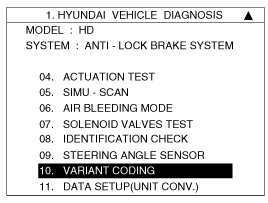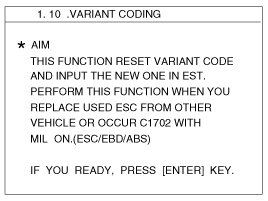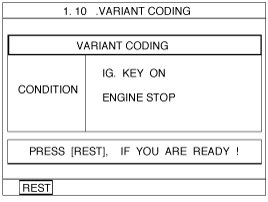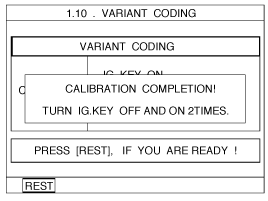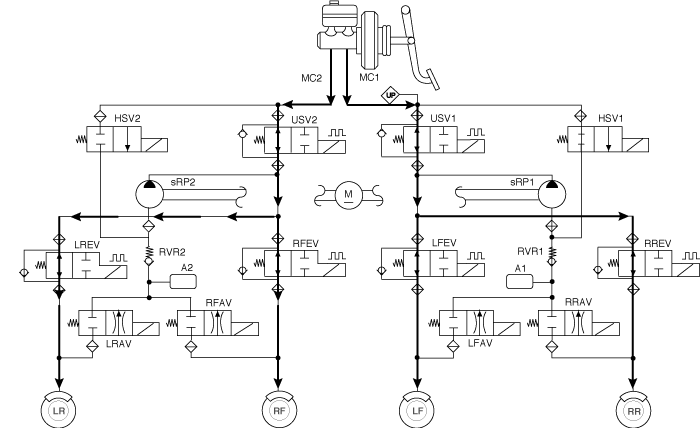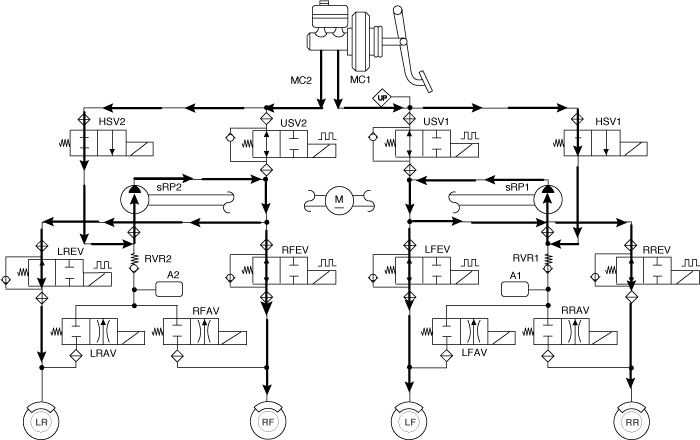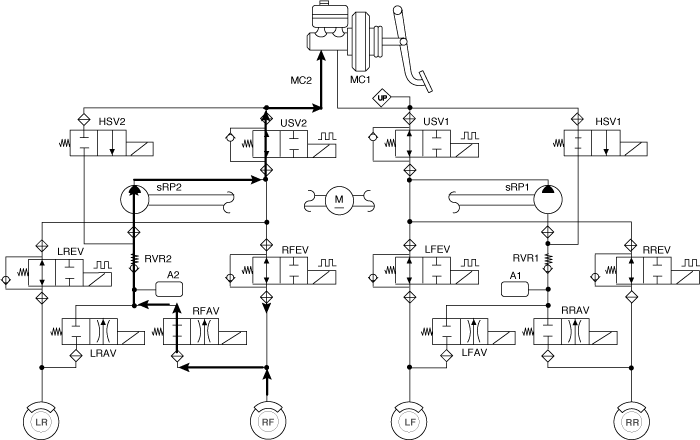 Hyundai Elantra HD: Description and Operation
Hyundai Elantra HD: Description and Operation
Description of ESC
Optimum driving safety now has a name : ESC, the Electronic Stability
Control.
ESC recognizes critical driving conditions, such as emergency reactions
in dangerous situations, and stabilizes the vehicle by wheel-individual braking
and engine control intervention.
ESC adds a further function known as Active Yaw Control (AYC) to the ABS,
TCS, EBD and ESC functions. Whereas the ABS/TCS function controls wheel slip
during braking and acceleration and, thus, mainly intervenes in the longitudinal
dynamics of the vehicle, active yaw control stabilizes the vehicle about its
vertical axis.
This is achieved by wheel individual brake intervention and adaptation
of the momentary engine torque with no need for any action to be taken by the
driver.
ESC essentially consists of three assemblies : the sensors, the electronic
control unit and the actuators.
Of course, the stability control feature works under all driving and operating
conditions. Under certain driving conditions, the ABS/TCS function can be activated
simultaneously with the ESC function in response to a command by the driver.
In the event of a failure of the stability control function, the basic
safety function, ABS, is still maintained.
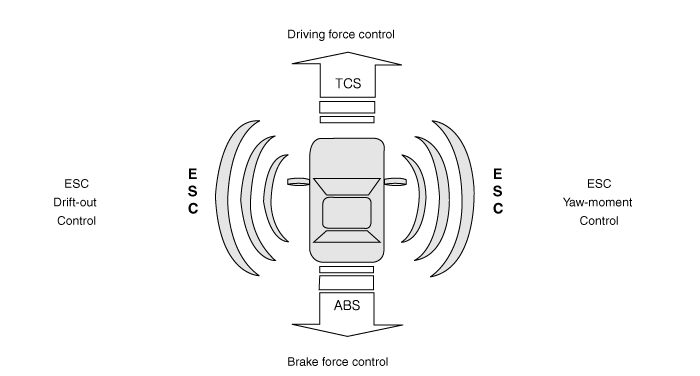
Description of ESC Control
ESC system includes ABS/EBD, TCS and AYC (Active yaw control) function.
ABS/EBD function : The ECU changes the active sensor signal (current shift)
coming from the four wheel sensors to the square waveform.By using the input
of above signals, the ECU calculates the vehicle speed and the acceleration
& deceleration of the four wheels.And, the ECU judges whether the ABS/EBD should
be actuated or not.
TCS function prevents the wheel slip of drive direction by adding the
brake pressure and engine torque reduction via CAN communication.TCS function
uses the wheel speed sensor signal to determine the wheel slip as far as ABS
function.
AYC function prevents unstable maneuver of the vehicle. To determine the
vehicle maneuver, AYC function uses the maneuver sensor signals(Yaw Rate Sensor,
Lateral Acceleration Sensor, Steering Wheel Angle Sensor).If vehicle maneuver
is unstable (Over Steer or Under Steer), AYC function applies the brake pressure
on certain wheel, and send engine torque reduction signal by CAN.
After the key-on, the ECU continually diagnoses the system failure. (self-diagnosis)If
the system failure is detected, the ECU informs driver of the system failure
through the BRAKE/ABS/ESC warning lamp. (fail-safe warning)
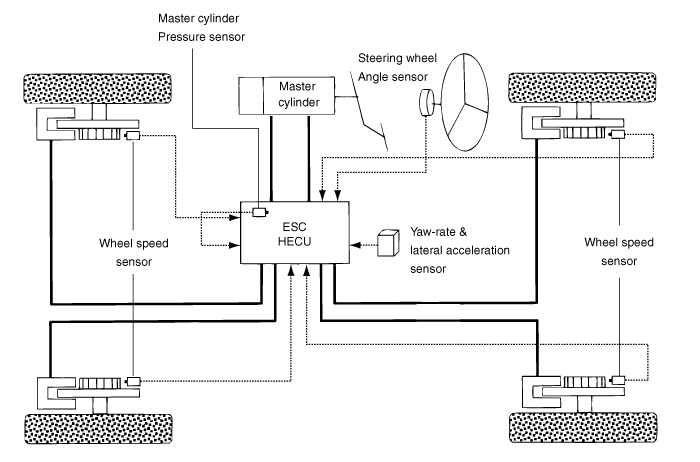
Variant Coding
The HECU is programmed with a variant code based on the vehicle powertrain
configuration. This variant code is used to determine the appropriate ESC calculations.
Variant code programming should be performed whenever an HECU is replaced.
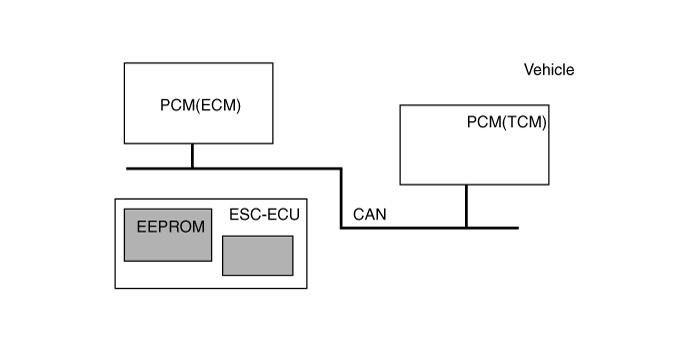
Procedure Of Variant Coding
| 1. |
Connect the scan tool to the data link connector located underneath
the dash panel.
|
| 2. |
Select vehicle name.
|
| 3. |
Select ANTI-LOCK BRAKE SYSTEM.
|
| 4. |
Select the variant coding.
|
| 5. |
Follow the next procedure according to the comment .
|
| 6. |
Confirm the condition , and then push the "REST".
|
| 7. |
If the procedure is finished, the screen is displayed as shown
below.
|
| 8. |
IGN off.
|
| 9. |
IGN on.
|
| 10. |
The variant coding is completed.
|
Input and Output Diagram
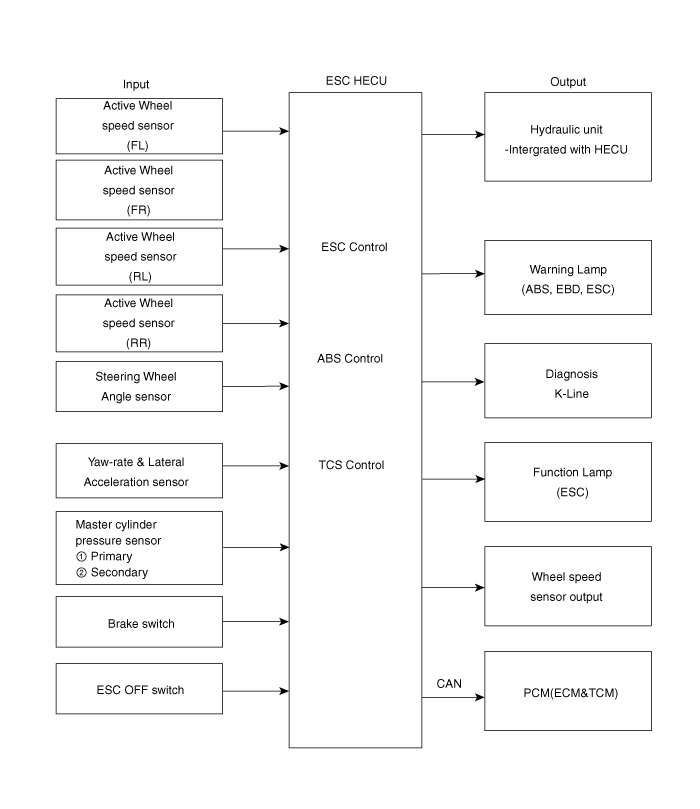
ESC Operation Mode
| 1. |
Step 1
The ESC analyzes the intention of the driver.
|
| 2. |
Step 2
It analyzes the movement of the ESC vehicle.
|
| 3. |
Step 3
The HECU calculates the required strategy, then actuates the appropriate
valves and sends torque control requests via CAN to maintain vehicle
stability.
|
ESC Operation Mode
| 1. |
ESC Non-operation-Normal braking.
|
| 2. |
ESC Increase Mode
|
| 3. |
ESC Hold Mode ( FR is only controlled.)
|
| 4. |
ESC Decrease Mode (FR is only controlled)
|
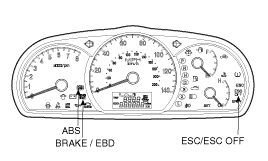
ABS Warning Lamp module
The active ABS warning lamp module indicates the self-test and failure
status of the ABS .The ABS warning lamp may be on:
| - |
During the initialization phase after IGN ON. (continuously 3
seconds).
|
| - |
In the event of inhibition of ABS functions by failure.
|
| - |
During diagnostic mode.
|
| - |
When the ECU Connector is separated from ECU.
|
EBD/Parking Brake Warning Lamp Module
The active EBD warning lamp module indicates the self-test and failure
status of the EBD. However, in case the Parking Brake Switch is turned on, the
EBD warning lamp is always turned on regardless of EBD functions. The EBD warning
lamp shall be on:
| - |
During the initialization phase after IGN ON. (continuously 3
seconds).
|
| - |
When the Parking Brake Switch is ON or brake fluid level is low.
|
| - |
When the EBD function is out of order .
|
| - |
During diagnostic mode.
|
| - |
When the ECU Connector is separated from ECU.
|
ESC Warning Lamp (ESC system)
The ESC warning lamp indicates the self-test and failure status of the
ESC.
The ESC warning lamp may be turned on under the following conditions :
| - |
During the initialization phase after IGN ON. (continuously 3
seconds).
|
| - |
In the event of inhibition of ESC functions by failure.
|
| - |
When driver turn off the ESC function by on/off switch.
|
| - |
During diagnostic mode.
|
ESC Function Lamp (ESC system)
The ESC function lamp indicates the self-test and operating status of
the ESC.
The ESC Function lamp operates under the following conditions :
| - |
During the initialization phase after IGN ON. (continuously 3
seconds).
|
| - |
When the ESC control is operating. (Blinking - 2Hz)
|
ESC On/Off Switch (ESC system)
The ESC On/Off Switch shall be used to toggle the ESC function between
On/Off states based upon driver input.
The On/Off switch shall be a normally open, momentary contact switch.
Initial status of the ESC function is on and the switch is used to request
an ESC status change.

